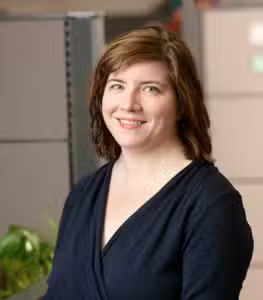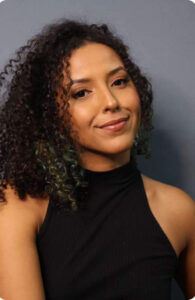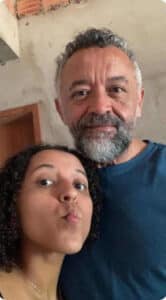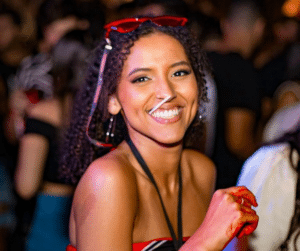Grief, Bereavement, and Chosen Families in the LGBTQIA+ Community
By Nora Biette-Timons
Earlier this summer, throughout the month of June, we celebrated the joy of queerness, the joy of embracing one’s authentic self and sexuality. We hold this love and delight in our hearts throughout the year—but we also remember that public Pride celebrations did not come easily: Queer existence has a painful history, and the fights for equality and recognition are far from over.
Throughout these fights, queer widows and widowers have told stories of the saddest moments of their Flives: They were even more helpless than straight people facing the loss of a spouse, because as their partners were dying, they had no legal rights to make decisions. They were helpless in the face of death, as we all are, but also in the face of discrimination, which was legal until all too recently.
 Though queer acceptance has come a long way in the past 25 years, and the scale of these problems has lessened — sometimes significantly — after the Supreme Court upheld Obergefell in 2015, they do still exist. Social and cultural attitudes remain prejudiced, and, as a result, many bereaved queer people experience disenfranchised grief; “grief that is not seen as legitimate or meaningful by society or others in their social network,” says Dr. Kailey Roberts, a psychology professor whose research specializes in bereavement and palliative care. This can show up as dead partners being referred to as “friends”; families leaving same-sex partners out of the mourning process because they disapprove; or workplaces not recognizing these kinship ties and refusing to grant time off.
Though queer acceptance has come a long way in the past 25 years, and the scale of these problems has lessened — sometimes significantly — after the Supreme Court upheld Obergefell in 2015, they do still exist. Social and cultural attitudes remain prejudiced, and, as a result, many bereaved queer people experience disenfranchised grief; “grief that is not seen as legitimate or meaningful by society or others in their social network,” says Dr. Kailey Roberts, a psychology professor whose research specializes in bereavement and palliative care. This can show up as dead partners being referred to as “friends”; families leaving same-sex partners out of the mourning process because they disapprove; or workplaces not recognizing these kinship ties and refusing to grant time off.
This lack of being seen by and understood exacerbates loss for bereaved LGBTQIA+ individuals, Roberts says. As a man named George Seabold wrote in Gay Widowers: Life After Death of a Partner, an anthology published in 1997 specifically to help bereaved gay men, his grief over the death of his partner was further isolating because, at the time, he was not publicly out.
For many reasons — from historic marginalization to community bonds — the concept of “chosen family” is particularly strong for LGBTQ+ people. As Roberts puts it, “‘family’ includes not only biologically or legally related kin, but also [people] who are highly meaningfully connected and closely involved in each other’s lives but not bio-legally related.” An essay in ColorBloq, an online journal by and for queer and trans people of color, notes that “chosen family” is especially salient for LGBTQ+ people of color, who face disproportionate rates of social and economic isolation. Chosen family, “built on kinship with intentional demonstrations of love, shared history, material and emotional assistance, and enduring solidarity. [It] encompasses a network of social support, intimacy and identity.” These kin relations “are at the center of the activities that sustain a family built on social and cultural connections rather than legal and biological.”
***
Older generations, in particular, carry the scars of the AIDS crisis in the 1980s, which was for far too long largely ignored by governments, public health officials, and society writ broadly. While those memories do not exist for younger generations of queer folks, the horror of them has not disappeared. “The collective trauma of the HIV epidemic has been passed down through generations, but we rarely contend with it as a community,” researcher Alexander McClelland writes in Between Certain Death and Possible Future, a collection of essays analyzing the legacy — and current reality — of HIV/AIDS. “The grief and deaths of thousands of gay men, trans women, injection drug users, sex workers, immigrants, people of color, and other marginalized people were not taken seriously then, so how can the grief and fears of subsequent generations be taken seriously now?”
The painful history of HIV/AIDS echoes today as many older queer adults who lost partners and chosen families during the crisis in the 1980s and 1990s enter their later years. The “ongoing societal stigma associated with LGBTQIA+ identities” and the “lack of tailored and affirming resources can contribute to suffering and loss” in this community, Roberts says.
 This missing support has real, tangible health effects. Beyond disenfranchised grief, elderly queer patients, on average, face more health issues (mental, physical, and cognitive) and, on top of that, encounter barriers in healthcare settings that sometimes can lead to them avoiding treatment, thus hastening or worsening end-of-life outcomes. An analysis published earlier this year titled “Health disparities among LGBTQ+ older adults: challenges and resources, a systematic review” reported that, in comparison to their heterosexual counterparts, older lesbians and bisexual women have “heightened rates of overweight and cardiovascular disease” and gay and bisexual men have higher rates of angina, cancer, and diabetes.
This missing support has real, tangible health effects. Beyond disenfranchised grief, elderly queer patients, on average, face more health issues (mental, physical, and cognitive) and, on top of that, encounter barriers in healthcare settings that sometimes can lead to them avoiding treatment, thus hastening or worsening end-of-life outcomes. An analysis published earlier this year titled “Health disparities among LGBTQ+ older adults: challenges and resources, a systematic review” reported that, in comparison to their heterosexual counterparts, older lesbians and bisexual women have “heightened rates of overweight and cardiovascular disease” and gay and bisexual men have higher rates of angina, cancer, and diabetes.
This report said that evidence overwhelmingly suggests that these health issues are caused by the stigma (including internalized stigma) and isolation older queer people faced throughout their lives—and still face today. These problems can be worsened when they seek healthcare, where heterosexuality is the presumed norm, and doctors are often untrained on the specific issues LGBTQ+ elders face.
Some lawmakers have recognized this reality, and their efforts to solve it are ongoing. Sen. Michael Bennet co-sponsored legislation in 2017 to establish a National Resource Center on LGBT Aging, and in 2021, asked the Department of Health and Human Services for a briefing on the issues facing this population and urged the agency’s leaders to issue culturally competent guidance “to support LGBT older Americans receiving palliative and hospice care.”
***
The lack of full social acceptance and recognition also makes the grieving process more difficult, and forces the bereaved to grieve in private or to mask the full extent of their grief.
But when the death of a queer person is able to be marked and mourned in public, the way the deceased would want, it is something to be celebrated. The funeral for Cecilia Gentili — a trans woman, actress who appeared on “Pose,” sex worker advocate, and stalwart of New York City’s LGBTQ community — was a perfect example of the progress that’s been made, and the hurdles queer folks still face. Gentili died in February at age 52, and her funeral drew more than 1,000 mourners to St. Paul’s Cathedral, the same cathedral where gay activists once staged protests against the Catholic Church. While planning the service, her family kept her full identity “under wraps,” according to the New York Times, out of concern that the archdiocese would object to holding a funeral for a trans woman (and the archdiocese did indeed condemn the funeral after the fact). But the memorial itself celebrated Gentili’s true self, out in the open: Her family and chosen family attended — many in outfits described as more likely to be found at a fashion show than a funeral and it functioned, as the Times put it, as “a celebration of her life and an exuberant piece of political theater.”
You Were Bigger Than the Whole Sky
You Were Bigger Than the Whole Sky
By Nora Biette-Timons
In “You’re On Your Own, Kid,” a ballad about growing up and feeling alone, pop superstar Taylor Swift sings, “So make the friendship bracelets, take the moment and taste it, you’ve got no reason to be afraid… You’re on your own kid, yeah, you can face this.” The song was never released as a single, and never received much specific publicity, but it immediately became a hit among Swift’s fans (known as Swifties), who admire her emotional, descriptive lyrics.
Legendary singer-songwriter Stevie Nicks counts herself among those fans. At a concert in May 2023, shortly after the death of her best friend and Fleetwood Mac bandmate Christine McVie, Nicks thanked Swift for writing “You’re On You’re Own, Kid,” saying it captured “the sadness of how I feel.” When Nicks attended Swift’s Eras Tour in Dublin, Swift played the song, and fan videos showed Nicks tearing up.
The song also inspired what’s become a global trend: the trading of friendship bracelets between audience members at each show. Many bear messages related to Swift’s discography; some make references to her personal life; some are more on the funny and crude side. Importantly, these bracelets are not for Swift herself — rather, they’re a sign of community.
 The combination of friendship bracelets and the message that “You’re On You’re Own, Kid” has for some navigating grief came when Evermore’s founder, Joyal Mulheron, and her daughters went to the Eras Tour opening weekend in March 2023 — their first Taylor Swift concert ever. While waiting in line, Swifties gave Mulheron two friendship bracelets: one that read “EVERMORE” (coincidentally, also the name of one of Swift’s albums, which came out years after Evermore was established), and one with a simple “E,” for Eleanora, her daughter who died.
The combination of friendship bracelets and the message that “You’re On You’re Own, Kid” has for some navigating grief came when Evermore’s founder, Joyal Mulheron, and her daughters went to the Eras Tour opening weekend in March 2023 — their first Taylor Swift concert ever. While waiting in line, Swifties gave Mulheron two friendship bracelets: one that read “EVERMORE” (coincidentally, also the name of one of Swift’s albums, which came out years after Evermore was established), and one with a simple “E,” for Eleanora, her daughter who died.
Months later, this symbolic exchange took on new meaning. Mulheron connected with Lexie Manion, a mental health advocate, to brainstorm ways to memorialize Ana Clara Benevides Machado, a Swift fan who died of heat and exhaustion at the Eras Tour in Rio de Janeiro in November. Reflecting on this meaningful moment months later, Manion suggested, “friendship bracelets!” It became clear that friendship bracelets were a fitting way to keep Machado’s memory alive.
 Ana Machado would have turned 24 on July 22, and on that day, Evermore will remember her memory with a hashtag campaign on social media: #LoveIsForEvermore. Among the tweets will be a video honoring Machado, set to Swift’s “Long Live,” a poignant song about remembering loved ones. In recent months, Evermore has been in contact with Machado’s parents, Adriana Cristina da Silva Benevides and Weiny Machado, about this event honoring their daughter.
Ana Machado would have turned 24 on July 22, and on that day, Evermore will remember her memory with a hashtag campaign on social media: #LoveIsForEvermore. Among the tweets will be a video honoring Machado, set to Swift’s “Long Live,” a poignant song about remembering loved ones. In recent months, Evermore has been in contact with Machado’s parents, Adriana Cristina da Silva Benevides and Weiny Machado, about this event honoring their daughter.
“For me, she will always be here, she is just traveling. She went to the ‘show of her life’ that’s how she said it. She would come back and tell me all the news about shows. We always talked about everything; we had no secrets. My BeneVIDA, Ana, my beloved daughter, my best friend who will never be forgotten. She infected everyone with her joy,” Adriana Benevides shared with Evermore. “I know that God did the best for her, but my mother’s heart suffers greatly in her absence. I always tell her, the day your heart stopped, half of me left with you, and the other half only exists. I love you daughter.”
“To me, losing a daughter was like losing my soul. The pain tears me apart every time you come to mind; it tears me apart not being able to save you; it tears me apart never hearing your voice again. My beloved daughter, I miss you so,” Weiny Machado said in a statement shared with Evermore. “I want to meet you again, but I know that I still have much to do, so I go on. It is not easy, but I continue for your sake. … Ana, you are my great love – my precious daughter – and I thank God for the wonderful time He allowed me to have you in my life.
Hip Hop Therapy Annual Showcase in the Bronx, New York
By Nora Biette-Timons
Hip hop therapy” was first conceptualized in the 1990s, by Dr. Edgar Tyson. In a 2002 academic paper, he wrote that “treatment innovations that are culturally sensitive and demonstrate promise…are of significant importance to practitioners working with at-risk and delinquent youth,” but noted that, up to that point, rap and hip-hop had not been among the tools that had been thoroughly explored. The teens (who had experienced traumatic conditions as children) who Tyson first worked with to hone hip hop therapy (or HHT) made clear that the specific intervention appealed to them: The majority said in qualitative interviews that “they appreciated the ‘respect’ for ‘their’ music” and a handful were prompted “to create their own rap songs and then share and discuss these songs.”
Tyson’s pioneering work has since been built upon by other practitioners, particularly J.C. Hall, who studied under Tyson and now runs a hip-hop therapy studio at Mott Haven Community High School in the Bronx—returning to hip-hop’s original home turf. Hall had his own severe mental health issues as a teen, and writing music helped him get through it. He melded that experience with HHT’s existing research and developed a program called Hip Hop Expressive Arts Therapy (HEAT), which synthesizes various expressive arts therapies (music, poetry, dance, art, etc.) and is characterized by the purposeful use of artistic mediums in treatment, transitioning freely between forms of expression to aid in deeper exploration and promote individual growth, community development, and transformative healing.
Evermore provided a microgrant HHT to film and produce its annual showcase, entitled “Transcendence,” at Mott Haven Community High in June.
Londynn, a student who participated in the event, said performing in it was “emotional” and it “empowered” her to face her fears. During the showcase, Londynn sang to her mother, who was in the audience, a moment Hall characterized as a “beautiful moment of connection.”
“In all honesty, the [hip hop therapy] studio is where you can be yourself, have fun and be free with no judgment,” she added — giving much kudos to Hall, who she said makes “the space a safe and friendly environment.”
Gambino, another student artist, heartily agreed, crediting Hall with being a force that “made me comfortable doing the showcase”: Having a “good person to actually help me and guide me and keep me on track and OK with being on a stage in front of multiple people” made Gambino “love everything about it.”
Gambino added that HHT has helped him navigate other aspects of his life, especially loss, “by helping me put my feelings onto a beat and letting me unleash all the tension in my body that I have built up.”
Cherokee Nation Art Classes and Art Show in Tahlequah, Oklahoma
Cherokee Nation Art Classes and Art Show in Tahlequah, Oklahoma
In 2022, Evermore recognized the alarming trends in childhood bereavement and had to act. After partnering with Penn State and the University of Southern California to release America’s Forgotten Orphans, the nation’s first report documenting a 20-year rise in the experience of parental death across every race and ethnicity, and every state. We found an alarming statistic: Indigenous children have experienced parental loss at a higher rate than every other racial or ethnic group — 2.2 times the national rate.
Following the release of that report, Evermore provided a microgrant serving the Cherokee Nation to provide space for coping and creation. Over six weeks, Cherokee Tribal Employment Rights Office (TERO) artist Dena Coleman, a local art teacher, led students in reading “We Are Grateful,” a picture book by Cherokee poet and author Traci Sorell. Each student received a free copy, and Coleman worked with them to react and process their emotions through art, a practice she’s developed by working in local schools.
 The students then had the opportunity to display their work at the Tahlequah Art Show at Coleman’s local studio, Dena’s Art Den, and all went home with gift bags of candy, snacks, and art supplies. Local singer-songwriter Steve Fisher accompanied the festivities, and Cherokee TERO artist and author Molly Brewer selected a handful of drawings to appear on a set of Evermore notecards that are now for sale for a limited time. Brewer, an artist, writer, and motion content producer, has received commissions for portraits and murals, and her work appears in the National Cherokee History Museum.
The students then had the opportunity to display their work at the Tahlequah Art Show at Coleman’s local studio, Dena’s Art Den, and all went home with gift bags of candy, snacks, and art supplies. Local singer-songwriter Steve Fisher accompanied the festivities, and Cherokee TERO artist and author Molly Brewer selected a handful of drawings to appear on a set of Evermore notecards that are now for sale for a limited time. Brewer, an artist, writer, and motion content producer, has received commissions for portraits and murals, and her work appears in the National Cherokee History Museum.
The drawings by the Tahlequah elementary schoolers — who were excited to see their own creations featured in an art exhibition — carry the charm inherent in all children’s artwork and are full of love and respect for the natural world: Fifth-grader Greyson’s aptly named drawing “Bison” shows an impressively detailed rendering of the animal crossing a stream; Kase, a first-grader, draws flourishing crops and livestock under a sunny sky in “I Am Grateful for Food,” showing a knowledge of food systems that rivals that of many adults. One student who participated, Lydia, reflected on the experience Coleman led, saying that it made her “feel like I am a part of my community.”
